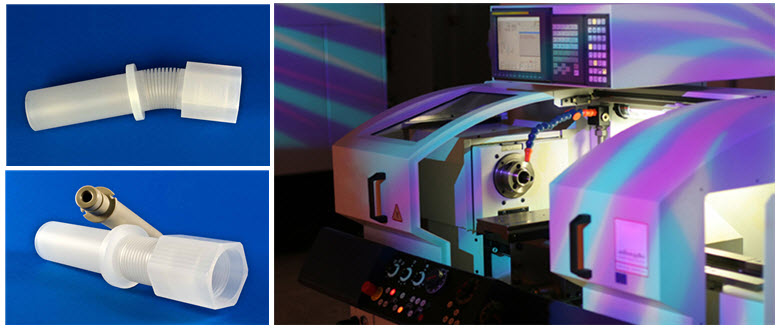Get Introduced to CNC Turning Machining
CNC machining, although a few decades old, has evolved with time and advancements in technology. It is one of the most widely used techniques for the fabrication of metals and plastics. It has adapted effectively with times to suit the technological trends. Although lathes were considered the best option for the metal machining processes, they are slow and time-consuming. In addition to this, with lathes, precision was always a concern. Over the years, several CNC machining techniques have been introduced that offer unmatched precision and complete or partial automation catering to massive volumes. Among all these techniques, CNC turning is widely preferred for getting the desired and precise parts in the right dimensions and quantities. This is because, with CNC machining, both repetitive tasks and high volume production can be achieved. This machining technique is quick and precise and demands less human intervention. Are you intrigued to more about CNC turning? This post gives insights into CNC turning machining processes. So, stay tuned.

What is CNC Turning Machining and How Does it Work?
CNC turning is known for the precision and accuracy of dimensions. This machining technique for product manufacturing is used to make several parts and components such as cylinders, pistons, screw leads, mill axes, and more. Several studies and research find that CNC turning is similar to the lathe turning process. The main difference between these two processes is that CNC turning does not require continuous assistance from an operator. The operator can rely on the CNC machine by setting the code and workpiece. In CNC turning, the workpiece rotates, and a single point cutting tool is appropriately positioned on a tool holder to make the desired pattern. The tool holder is restricted to move in vertical and horizontal motions. A lathe is turning equipment used for making concentrical shapes and can produce identical surface finished ones. Unlike the traditional lathe turning, the CNC turning process is much faster.
Why Use CNC Turning?
CNC turning is superior to conventional machining techniques as it delivers both efficient and effective results. Aside from being able to produce complex parts, CNC turning offers benefits as follows:
- Increased Production Speed: Using computerized control, CNC turning quickly produces the desired parts with a few manufacturing steps.
- Efficiency: CNC turning has internal quality detectors, which helps prevent the wastage of material.
- Safety: CNC turning is an automated fabrication process that minimizes the risk of damaged parts being produced. This way the safety of operators increases too.
- Cost-efficiency: CNC turning removes material from the workpiece, minimizing wastage and increasing accuracy.
Different Types of CNC Turning Operations
The following are some common CNC turning operations. Each of these can be utilized to produce precise parts.
- Hard Turning: Hard turning is the process of cutting hardened pieces with hardness between 58 and 70 HRC. It is a replacement for grinding and is mainly performed once the workpiece is heat treated.
- Tapered Turning: As the name implies, this method can produce tapered parts or components. In this process, the cutting tool moves at specific angles to the workpiece axis to obtain a tapered shape, which changes diameter from one to the other end.
- Spherical Turning: Spherical turning is popularly known as ball-shaped turning. In this method, the spherical surface is created on the workpiece by removing the material.
- Parting: It removes the specific length part from the workpiece.
- Grooving: Like parting, this method cuts a part to a specific depth from the material.
- Knurling: This finishing process creates a combination of a vertical, horizontal, or straight line on the workpiece surface.
Outlined above are the basics of the CNC turning machining process. Owing to its beneficial features, this process is used for several manufacturing processes today. If you are looking for CNC turned parts or components for your product or application, ensure you partner with an experienced industry leader in machining and fabrication. Brogan and Patrick Manufacturing is a reliable, trustworthy machining services provider in the United States. With vast years of experience and skilled employees, the company has been providing CNC machining services to its clients across industries, including military, aerospace, medical, oil and gas, and more.
